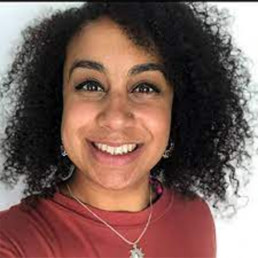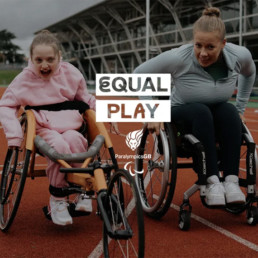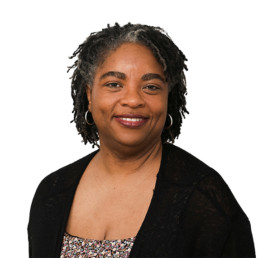Leading with Heart: Why Humanity Belongs in Leadership

Written by Sarah Mullin
Deputy Headteacher and EdD student
When Chancellor Rachel Reeves appeared tearful during Prime Minister’s Questions, it became national news. Speculation followed. Some questioned her professionalism. Others expressed empathy. But what if her emotion wasn’t about weakness or pressure — what if it simply showed that she cared?
We may never know what Reeves was feeling, and that’s not the point. What matters is how society responded. In contrast, when Prime Minister Keir Starmer’s voice cracked with emotion moments earlier, many praised his sincerity. The double standard reminds us that we still judge emotional expression differently in men and women — and that’s something schools have the power to change.
In my doctoral research with women secondary headteachers, many shared the pressure to appear composed at all times. One told me:
“I’ve learned to hide my emotions because if I show them, people assume I’m not coping.”
Another said:
“I care deeply about my staff and pupils. But there’s still a sense that to be respected, you have to be hard.”
This expectation isn’t just unfair — it’s limiting. When we reduce leadership to stoicism, we ignore the relational skills that make leaders truly effective: empathy, emotional intelligence, and care.
That’s why these public moments of emotion matter. Because our young people are watching.
Girls need to see that leadership doesn’t require hiding your feelings or shrinking your identity. That you can be strong, successful, and still be yourself. And boys need to see that care and vulnerability aren’t weaknesses — they are part of responsible, emotionally mature leadership.
In schools, we have the chance to model a broader, healthier version of what leadership looks like — not just in what we say, but in how we lead. Staff and students alike benefit from environments where humanity is welcomed, not hidden.
Let’s create a culture where showing heart doesn’t undermine leadership — it defines it.
Courageous Conversations

Written by Hannah Wilson
Founder of Diverse Educators
What is a Courageous Conversation?
In courageous conversations, whether in the context of performance appraisal, mentoring, or coaching, individuals are encouraged to express their views openly and truthfully, rather than defensively or with the purpose of laying blame. Integral to courageous conversations is an openness to learn.
What Is an Example of a Courageous Conversation?
Typical examples include handling conflict, confronting a colleague, expressing an unpopular idea on a team, asking for a favour, saying no to a request for a favour, asking for a raise, or trying to have a conversation with someone who is avoiding you. Research shows that many women find such “courageous conversations” challenging.
How Do You Frame a Courageous Conversation?
- Set your intentions clearly.
- Create a container.
- Prepare facilitators & groups.
- Set it up.
- Open with vulnerability.
- Have the discussion.
- Come back together and close.
- Support each other.
What Does the Research Tell Us About Courageous Conversations?
According to the work of Susan Scott there are The Seven Principles of Fierce Conversations:
- Master the courage to interrogate reality. Are your assumptions valid? Has anything changed? What is now required of you? Of others?
- Come out from behind yourself into the conversation and make it real. When the conversation is real, change can occur before the conversation is over.
- Be here, prepared to be nowhere else. Speak and listen as if this is the most important conversation you will ever have with this person.
- Tackle your toughest challenge today. Identify and then confront the real obstacles in your path. Confrontation should be a search for the truth. Healthy relationships include both confrontation and appreciation.
- Obey your instincts. During each conversation, listen for more than content. Listen for emotion and intent as well. Act on your instincts rather than passing them over for fear that you could be wrong or that you might offend.
- Take responsibility for your emotional wake. For a leader there is no trivial comment. The conversation is not about the relationship; the conversation is the relationship. Learning to deliver the message without the load allows you to speak with clarity, conviction, and compassion.
- Let silence do the heavy lifting. Talk with people, not at them. Memorable conversations include breathing space. Slow down the conversation so that insight can occur in the space between words.
Ten years of ‘No Outsiders’ assemblies: driving inclusion at a whole school level

Written by Andrew Moffat
Andrew Moffat has been teaching for 25 years and is currently PD Lead at Excelsior MAT. He is the author of “No Outsiders in our school: Teaching the Equality Act in Primary Schools” and “No Outsiders: everyone different, everyone welcome”. In 2017 Andrew was awarded a MBE for services to equality and diversity in education and in 2019 he was listed as a top ten finalist in the Varkey Foundation Global Teacher Prize.
No Outsiders assemblies are 10 years old this month! Hooray! This is amazing – it’s gone by in a flash and I can remember each one like it was only yesterday … all 693 of them and with over 300,000 views.
The point of a No Outsiders assembly is to make the ethos real. The No Outsiders scheme is based on 43 picture books with a progression of lesson plans written for children in Reception to Year 6. The picture books are great; I’m using some wonderful authors and classic reads in there. Some of the picture books are based on real life stories, but it’s still different to discussing a photo taken of a real person in the last week.
I realized in the early days of introducing the scheme in my school, that the lesson plans were not enough. You can’t build a whole school ethos on 6 lesson plans in each year group spread over the year; you need a weekly inclusion injection. Assemblies are the way to do this – everyone together discussing and driving the inclusive narrative. My aim was to find interesting current pictures to discuss with children and find ways to reach a ‘No Outsiders’ conclusion: “That’s why we say there are no outsiders here- everyone is welcome.” The assemblies became a key driver in our effort to develop the inclusive language and understanding. Everyone attended the weekly assemblies, and I encouraged staff to comment and relate to their own experiences in front of the children. Furthermore, as all the teachers were in the assembly, they would be referencing it throughout the week with their class.
I was worried when I first started doing the assemblies that we were summarising with the same sort of conclusion every week and I was reflecting whether children might get bored and start blandly replying, “No Outsiders” to every question, but it never happened. Even so, I started thinking about better questions and discussions; foster empathy skills and critical thinking; get a debate going with the children- ‘why does that person think that?’ and give them space to consider new and different ideas to their own.
Oracy changed everything. I remember attending an oracy inset at my school in about 2021 and it was a game changer. The oracy lead at the time suggested we worked together and used No Outsiders assemblies to teach oracy and it was a perfect solution to both our aims.
The aim in oracy is to teach children to speak; to use sentence stems and articulate their feelings; to agree and disagree. Disagreeing is ok as long as you disagree respectfully. This was key for No Outsiders because I could put in to practice this idea that different opinions were ok as long as you voiced them with respect and non-judgement. The ability to hold two points of view and balance opinions has always been central to a no outsiders ethos- I’m not teaching children what to think; rather I am teaching children to think. Now, using oracy, I had strategies and literally scripts (sentence stems) that I could use to encourage children to see other points of view and articulate those points of view in a reasoned manner, without necessarily agreeing with those points of view.
The first No Outsiders assembly was published on June 27th 2015. Looking back at my first attempt., it’s very different to the No Outsiders assemblies I am publishing today. It’s short, there are few questions and there is no attempt at recognising different points of view. Still, it’s a good first attempt and interesting to see how far we have come since June 2015.
Here it is (June 27th 2015): https://no-outsiders-assembly.blogspot.com/2015/06/assembly-picture-1-british-values.html
The picture shows a hand holding an old photo at chest height of an army squad. The focus is on the photo and the medals pinned to the jacket of the person holding up the photo. We can’t see their face.
Our activity:
Sword Beach, France Normandy veteran Alan King, from the Norwich and District NVA, holds a photo of himself (front second left) and his comrades from B Company taken on VE Day 1945, as dozens of British veterans made a cross-Channel pilgrimage to Normandy to honour the legacy of comrades killed in the D-Day landings 71 years ago. Photograph: Jonathan Brady/PA
- Who is this man?
- Why does he wear medals?
- Who do you think is in the photo he holds?
- What happened on June 6th 1944?
- Why does Alan King want this photo to be seen?
- What do you think are his feelings about that time?
The obvious change over the last 10 years is the development of questions. I would still use the photo today but if I were writing this assembly in 2025, the questioning would be completely different. Here’s a plan using the same picture but ten years on. The questions to ask the children use italics.
Our activity:
- What do you see in the picture? What do you think this story is about?
- There are two pictures here, how do you think they are related?
The photo shows Alan King who is a France Normandy Veteran.
- What is a Veteran?
- What does “France Normandy” mean – what famous event happened on the beaches at Normandy in WW2?
Alan holds a picture showing his comrades, taken on VE day in 1945. Alan is in the picture on the front row, second left.
- Why do you think Alan is holding this picture?
- What is VE day, what does it stand for and what happened on that day?
- We can’t see Alan’s face in the photo today; we just see his medals and the old Alan in the photo he holds. Why do you think the photographer chose to do this?
- Do you think the photographer should have sown Alan’s face? What are the arguments for and against this decision?
This photo of Alan was taken in 2015 as dozens of veterans crossed the English channel to Normandy to honour the legacy of comrades killed in the D-Day landings on June 6th 1944.
- What were the D-Day landings, what happened on that day?
- Why do you think veterans chose to make the crossing again 71 years later?
-
- On the day in 1944 how many people do you think were involved in the crossing? (there were 175,000 soldiers involved.) Why only dozens today?
- Why do we still remember that time when it was so long ago? Why not forget about it?
- What can we learn from Alan?
- Why is this about No Outsiders?
- Which British value is this about?
I love the questions about the focus of the image- why can’t we see Alan’s face? This is a great debate, and we can encourage pupils to think about and articulate both sides of the argument using sentence stems such as:
- “I would like to start by saying…”
- “I can see both sides: on the one hand, ___________, on the other…”
- “One argument might be…”
- “Building on…”
- “That’s an interesting point, have you thought about…”
Today I always end my assemblies with the two questions, “Why is this about No Outsiders?” and, “Which British value is this about?” to ground the discussion in our school and link it back to the experience of the children in school.
So, how should I finish this ten year anniversary blog post? It can only be to choose 5 of my favourite assemblies. It’s an impossible task to choose 5 out of over 500 so I will select 5 assemblies that reflected key events at the time. A key strength of these assemblies is I can write them quickly in response to any news event that I think schools need to talk about. I can respond right away, and schools can use the resource the next day.
1 – The death of Queen Elizabeth II
The photo shows thousands of people congregating outside Buckingham Palace.
I struggled at first to think of an angle that linked to No Outsiders and then when commentators kept referring to the stability and constant presence that the Queen represented in their lives, I realised my focus could be on how equality laws and attitudes have changed while she was on the throne and also how people from different backgrounds felt the same way about her. This assembly is by far the most viewed assembly of the last ten years. https://no-outsiders-assembly.blogspot.com/2022/09/queen-elizabeth-ii-1926-2022.html
I did meet the Queen in 2017 when I received a MBE. I had about one minute with her, and she asked what I did in school. I told her what No Outsiders was aiming for and how we taught it in schools – I got in the protected characteristics and British Values! I think she didn’t quite know what to say at first and my boyfriend in the audience who was watching said you could see her concentrating and thinking of a reply. Then she said, “Very important for all our futures, I should think.”
2 – England losing the Euros final 2024
The photo shows Gareth Southgate in a kit on a pitch cheering. The impression is he has just scored a goal.
The Euro final between England and Spain was held on a Sunday evening in July 2024 and I knew that the game was going to be the only topic of conversation in school the next day. It had to be the theme for the Monday morning assembly, but I didn’t want to be writing an assembly at 10:00 on a Sunday evening about the result. I needed an assembly that could be used in schools the next day regardless of the result.
I found a fantastic article on radio 4 about Gareth Southgate and a speech he gives to the players in the changing room before every match. In the speech, Gareth talks about what it means to be English and about Pride in the game. He also says this:
“I am the England men’s football team manager. I have a responsibility to the wider community to use my voice and so do the players. It’s their duty to interact with the public on matters such as equality, inclusivity, racial injustice, while using the power of their voices to help put debates on the table; to raise awareness and educate.”
A Head teacher contacted me after using this assembly to say it visibly lifted the children on Monday morning after they came in despondent and disappointed because of the result. That was exactly the response I hope for. This assembly became the third most viewed of the ten years.
3 – General elections
The photo shows Prime Minister Theresa May standing alongside Lord Bucket Head at the count in her constituency for the general election.
General elections give us a wonderful opportunity to talk about British values and this picture from 2017 says it all. It’s a perfect vehicle to get children discussing democracy and how it works.
The assembly also referenced Mr Fish Finger who stood in Westmorland and Lonsdale. Questions to consider included:
- 37,469 more people voted for Theresa May than voted for Lord Buckethead; why?
- Do you think Lord Buckethead and Mr Fishfinger wanted to win?
- Why do you think Mr Fishfinger and Lord Buckethead stood for election?
- Some people voted for either Mr Fishfinger or Lord Buckethead. Did their votes count? Why?
- Should Lord Buckethead and Mr Fishfinger be allowed to take part in elections? What would happen if they won?
- What does this story demonstrate about democracy in the UK?
- Why is this about No Outsiders?
4 – Fish and Chips
The photo shows Gary Lineker in a cafe tucking in to a plate of fish and chips.
When the horrific violence against refugees erupted last summer in Southport and across the country, I published assemblies for schools to use when they returned in September. In the autumn term 2024 I was invited by a school in Southport to deliver No Outsiders training to their staff. Five other local schools joined the training and the local police also came.
This assembly was a direct response to any voices arguing refugees are not welcome, by making clear how England has benefitted from refugees. In a short video, Gary Lineker celebrates National Fish and Chip day, by asking where all the food on his plate originates.
I recently asked the Head Teacher of the school where I delivered training to reflect on the impact of that training a year later and here is his response:
“The No Outsiders programme has had a huge impact at our school. The assemblies are fresh, relevant and provide wonderful opportunities for interactive assemblies that cover vital issues. In addition, the units of work for classrooms provide a depth of discussion that has really improved provision at our school. The programme has been embraced by the whole school community and is one of the most positive things we have undertaken in the last few years.”
5 – Start of a school year
The photo shows a sky dive formation involving 113 people making a flower shape in the sky.
The most re-used assembly of the last ten years has placed this one as the second most viewed overall. It’s perfect for the first assembly of a new school year. I find small ways to update it every time I repost, but the essence remains the same. It uses a photo of a world record flower formation skydive performed by an international crew and asks what is the impact when people of different nationality, gender, religion etc work together. Why don’t all the black sky divers stay together, and the white sky divers stay together? The flower formation took 13 attempts to get right; why didn’t they give up after 5?
There’s also a lone figure top left who is not part of the formation – who are they, what are they doing? What do you think people are shouting to them? My most recent update included questions about how the photo was taken- from what angle and form where? And how long would the divers have to make the formation? What can we learn from them?
https://ks1no-outsiders-assembly.blogspot.com/2024/09/start-of-school-year.html
I want to say thank you to anyone who has used a No Outsiders assembly over the last ten years and also to anyone who has got in touch to give feedback. I can’t see a time when I won’t be writing and publishing these assemblies; I think I’ll be writing them long after I am retired! The assemblies still give me joy both to write and deliver, and when things get challenging in the world outside, they give me hope. These assemblies are my way of saying “It’s going to be ok – we can get through this together. Together we are strong.”
Here’s to the next ten years. Cheers!
Signposting:
No Outsiders assemblies are published weekly free to access on the No Outsiders website www.no-outsiders.com
Andrew Moffat also sends assemblies in powerpoint form to schools on a mailing list each week. To join the free mailing list and receive the power points, contact Andrew on his school email a.moffat@excelsiormat.org
Designing Neurodivergent-Friendly Classrooms: Rethinking Inclusion from the Inside Out

Written by Sana Siddiq
Sana Siddiq is an educator, coach, and creator of The Elevate Framework™, guiding schools to lead with empathy, equity, and emotional safety. Her work centres neurodivergent inclusion, systemic transformation, and holistic development—supporting educators to unlearn outdated systems and build compassionate, conscious spaces where every learner can thrive.
As the educational landscape evolves, the call for inclusive classrooms has grown louder. But inclusion, when viewed through a neurotypical lens, often amounts to little more than accommodation. True inclusion must be co-designed with, not just for, neurodivergent learners—and that demands a radical reimagining of the systems, assumptions, and environments we teach within.
A Paradigm Shift: From “Fixing the Child” to Rethinking the System
Traditional classroom models are built on industrial-era expectations of standardisation, control, and passive compliance. These models were never designed for neurodivergent minds—and expecting children with ADHD, autism, sensory sensitivities, or anxiety to thrive in such spaces without reconfiguration is not just misguided, it’s unjust.
Instead of asking: How can we make this child fit the classroom? we must ask: How can we make the classroom fit the child?
This isn’t just semantics—it’s a shift in power, responsibility, and educational ethos. Inclusion is not the work of putting ramps in place for those who can’t walk the stairs. It’s the work of redesigning the building altogether.
What Does a Neurodivergent-Friendly Classroom Actually Look Like?
- Sensory-Conscious Spaces
Sensory overwhelm is one of the most commonly misunderstood barriers to learning. Yet classrooms are often visually cluttered, fluorescent-lit, noisy environments. We must move beyond tokenistic “calm corners” and instead build entire spaces that are:
- Predictable in layout
- Low-arousal in aesthetic (muted tones, warm lighting)
- Flexible in sensory offerings (noise-cancelling headphones, wiggle stools, movement options)
Rather than viewing sensory needs as “special,” we can normalise and embed these supports universally, benefiting all learners.
- Regulation as a Collective Culture
Many schools still use behaviourist models—token charts, clip systems, sanctions—that confuse dysregulation with defiance. But neuroscience tells us that the developing brain cannot access executive functioning when in fight, flight, or freeze. What a dysregulated child needs is not a consequence—it’s co-regulation.
Neurodivergent-friendly classrooms:
- Teach and model regulation proactively
- Offer regular body breaks, movement prompts, and access to regulation tools
- Embed emotional check-ins as a non-negotiable part of the day
- Universal Design for Learning (UDL)
UDL isn’t about creating “special resources.” It’s a mindset that recognises there is no one-size-fits-all learner.
This means:
- Offering multiple means of engagement (movement-based, visual, auditory)
- Supporting alternative ways of showing knowledge (video, drawing, mind maps, voice recordings)
- Designing flexible tasks from the outset, rather than retrofitting support
- Agency and Autonomy as Core Pedagogy
Many neurodivergent children feel disempowered by school systems that reward obedience over authenticity. Reclaiming agency is not just empowering—it’s protective.
You might:
- Involve students in co-creating classroom agreements
- Offer opt-in group work, or self-paced learning tasks
- Provide choices in how, where, and when work is completed
Thought Leadership: We Need a Cultural Shift, Not a Checklist
This work is not about box-ticking or surface-level strategies. It is about dismantling ableist structures baked into our educational systems.
We must move away from the deficit narrative that views neurodivergence as a problem to be solved. Instead, we need to centre neurodivergent voices, lived experience, and expertise in how classrooms are shaped. Ask yourself:
- Who are our systems currently built for?
- Whose needs are framed as “challenging”?
- Who has to work harder just to belong?
The answers to these questions reveal more about our values than any mission statement.
Leadership Implications: Inclusion Is a Leadership Practice
School leaders must lead this shift with courage. Neurodivergent-friendly practice must be embedded into:
- Curriculum design
- CPD and teacher training
- Safeguarding and wellbeing policies
- Recruitment, voice, and governance
Inclusion cannot rest on the shoulders of one passionate SENDCo or learning support assistant. It must be championed, funded, and normalised from the top down.
In Summary
Designing neurodivergent-friendly classrooms is not about making tweaks to traditional practice. It’s about interrogating the very foundations of what we call “normal” in education. It’s about rejecting the idea that some learners are “too much,” and instead building a world that is wide enough to hold all ways of being.
Because the truth is, what works for neurodivergent children works better for all children: more agency, more flexibility, more emotional safety, more belonging.
And that’s not just inclusion—that’s transformation.
Women of a certain age: The menopause at school

Written by Sarah Wordlaw
Sarah Wordlaw is a headteacher working in an inner-city South London primary school. She has successfully rewritten the curriculum in her school and is passionate about how teachers can use the curriculum to make the next generation better than us! She has led various subjects and areas of the school over her educational career and worked in many different capacities in a wide range of educational establishments. She identifies as a queer woman of mixed heritage and often felt unseen in taught subjects, both as a child and as an adult, which has fuelled her interest in diversity and inclusion.
Developing an anti-misogynist culture in your school starts from the top. There must be a commitment from leadership at all levels, and it must be threaded throughout all school practices and policies.
However, women remain under-represented within school leadership (Bergmann et al, 2022). In England, the school leadership characteristics and trends report (DfE, 2022) reveals that at primary level, 85% of primary teachers are female compared with 74% of headteachers.
Traditionally, notions of leadership are connected to perceptions of masculinity – having “strength” or “gravitas”. In reality, being a successful primary school leader requires someone who is both strong and vulnerable, someone who is driven and compassionate, someone who is commanding and empathic.
Female teachers are less likely to be promoted to headship or senior leadership than their male counterparts, and part-time teachers are 45% less likely than full-time to be promoted to both headship and even to middle leadership (DfE, 2022).
That being the case, I wonder if the reason we don’t talk about menopause as much as we should is because senior leadership teams can often be male-dominated.
Menopause in schools
Menopause is a significant time for women, usually occurring between the ages of 45 and 55. The menopause is defined as when a woman’s periods have stopped for at least 12 consecutive months.
The first step to take as a school leader is to understand what the menopause might involve for a colleague – and it is not just hot flushes!
A report from the Fawcett Society reminds us that that 84% of women describe the lack of sleep and 73% the brain fog that can come with the menopause as being difficult – this compared to 70% who said this about the hot flushes or night sweats; 69% say they experience difficulties with anxiety or depression due to menopause (Bazeley et al, 2022).
The report is cited in a recent Headteacher Update article written by employment law expert Kelly Rayner. In this piece – which is well worth a read, as indeed is the Fawcett Society report – we are also reminded that 8 in 10 women experiencing menopausal symptoms are in work and that 44% of women said their ability to work had been affected by the menopause, while 1 in 10 have left work due to menopause symptoms.
The National Education Union reminds us that the menopause is “an occupational health issue for women educators, as well as also being an equality issue” (NEU, 2025). Symptoms can include:
- Hot flushes or night sweats
- Heavy or light periods
- Headaches/brain fog
- Insomnia
- Urogenital issues
- Loss of confidence
- Low mood
- Poor or reduced concentration
- Anxiety and panic attacks
- Joint pain and muscular aches
However, despite the clear impact these symptoms might have on someone’s working life, sadly, the menopause is rarely mentioned in many workplaces, particularly when the leaders are male.
Women should be able to work in a supportive and understanding environment with reasonable adjustments made when going through menopause. The NEU offers a range of resources, including checklists for school leaders, posters to raise awareness, and a model school policy (see further information).
Practical issues
There are a number of practical questions that we can consider immediately. Drawing on the NEU’s advice, these include:
- Do you have a menopause policy and are all staff aware of it, especially line managers? Again, templates can be found via the NEU and The Key among others.
- Is the staff team “menopause-aware” – this will avoid female members of staff having to raise it as an individual issue?
- How do you ensure adequate ventilation in classrooms and staffrooms? Do staff have access to good temperature control for classrooms?
- Other simple provisions can include leaving doors open, ensuring that windows can be safely opened, access to fans, and fitting blinds to windows.
- What systems are in place for cover if a staff member needs to go to the bathroom or get a cold drink mid-lesson? Indeed, is there ready access to cold drinking water?
- Ensure you have sanitary products available in toilets – you could have a basket of a variety of different products in your women’s toilets
- What systems are in place to ensure swift permission for absence to attend menopause-related medical appointments.
The NEU advises leaders to support requests for flexibility, such as undertaking non-contact time at home or requests to reduce hours or change hours temporarily. Remember, offering cover in the short term is better than having to hire new staff members in the long term
Its advice for leaders states: “Give control to individual teachers and support staff over their immediate working environment – a clear message will empower staff and reduce requests to the leadership team.”
A positive culture
Your approach and your written menopause policy must create a culture in school which is positive. For example, supporting staff members experiencing difficulties helps to improve the wellbeing of staff, retains great and experienced teachers, reduces recruitment costs, and works towards gender equality. These are key messages.
Other advice for school leaders includes:
- Get to know your staff: Have regular catch-ups so you build trust and are in touch with how they are feeling and what they are experiencing.
- As the NEU advises above, give control to female staff over their immediate working environment – this is empowering
- Research and encourage access to support services locally. Many local authorities run menopause working groups for local government employees – make your whole staff team aware of this and offer cover if there were women who would like to attend the support meetings.
- Understand that every woman’s experience of the menopause is different. Build a supportive culture at work by having an open-door policy. Ensure a private conversation can take place if needs-be and make sure you follow-up and review any actions alongside agreed adjustments
Final thoughts
Having a menopause policy helps to develop gender equality in schools (and beyond) as it addresses the specific health needs of women going through menopause, which can impact work, potentially leading to unequal treatment and career progression disadvantages.
Further information & resources
Bazeley, Marren & Shepherd: Menopause and the Workplace, Fawcett Society, 2022: Click here
Bergmann, Alban Conto & Brossard: Increasing women’s representation in school leadership: A promising path towards improving learning, UNICEF Office of Research, 2022.
DfE: Transparency data: School leadership in England 2010 to 2020: Characteristics and trends, 2022: www.gov.uk/government/publications/school-leadership-in-england-2010-to-2020-characteristics-and-trends
NEU: Working through the menopause: Resources including template policy and school leader checklists: https://neu.org.uk/advice/equality/sex-and-gender-equality/working-through-menopause
To Belong Is Not Enough: Why We Must Move Towards Mattering

Written by Mohamed Abdallah
With almost two decades of experience, Mohamed started his journey in youth work and pupil referral units before spearheading groundbreaking inclusive practices and systems as a leader in an 'Outstanding' all-through mainstream school. Driven by a relentless commitment to positive change, Mohamed now dedicates his efforts to collaborating with school leaders across the nation as the Head of the Inclusive Leadership Course at The Difference.
“No one would care if I weren’t here.”
I can remember the words hitting me hard. As Designated Safeguarding Lead there were immediate red flags, but on a human level it broke my heart.
100% attendance, great progress, and never in trouble. On paper he belonged – but in reality he thought nobody cared.
Across the country, I hear the language of belonging increasingly referenced in discussions about student engagement, wellbeing, and success. And I welcome it. It’s a refreshing shift in our narrative about the student experience.
Still, something didn’t feel right. Then, it clicked.
It is not enough to simply belong; you should also matter.
My experience has shown me that a student can belong to a school community without ever feeling that their presence or contributions truly matter. A friend recently shared a US study with me that revealed a surprising finding: a sense of ‘belonging’ to a school community did not significantly affect academic performance. But instead there were other factors that determined success, such as participation and self regulated learning.
Think about it this way: You belong to a gym, but do the regulars know your name? You belong to a workplace, but do your ideas shape the way things are done? You belong to a school, but when you are absent, is there a noticeable void?
Mattering is more than belonging to a place or a community; it is about your significance.
One of the most prominent academic advocates for mattering is the US community psychologist Isaac Prilleltensky. He argues that developing a strong sense of mattering depends on two things: feeling you are valued, and feeling that you add value – whether that be within your workplace, your community, your family, or your friendship group. In the UK, my good friend Luke Billingham has been one of the most influential thinkers and writers on young people and mattering.
The Three Components of Mattering in Schools
After multiple voice notes back and forth, Luke and I sat down to discuss this matter (see what I did there!), and we asked:
If a student stopped coming to school tomorrow, would they feel like their absence was noticed?
Does every student have positive and affirming relationships with peers and at least one adult?
Are students actively shaping the school environment, or are they simply complying with expectations?
These questions helped us think more deeply about mattering. Of course, students should belong. But would we be satisfied as school leaders with 100% attendance, high attainment, and zero suspensions, yet students still told us, “No one would care if I weren’t here”?
They should feel they matter.
Reflecting on our experiences in different schools, Luke and I identified some key factors which we think enable students to develop mattering; Voice, Relationships, and Participation.
- Voice: Too often, schools claim to prioritise student voice while keeping real decision-making at the leadership level. But voice is not just about being heard. Schools must embed student experience and perspectives into decision-making, not just through surveys, but by creating opportunities for meaningful dialogue and change. Even when student perspectives challenge us, they offer uncomfortable truths we must engage with. When students see their input shape school culture, they matter.
- Relationships: A student might belong to a school, but do they have relationships that affirm their worth? Schools could cultivate opportunities for positive peer relationships to create strong social bonds, and to ensure every student has at least one trusted adult. Relationships built on trust and recognition, and environments where students feel valued and connected.
- Participation: Mattering isn’t just about feeling noticed, it’s about feeling needed. Students need opportunities to contribute meaningfully to their school communities. This goes beyond enrichment clubs; it means ensuring that students are actively shaping their environments. Whether through student-led campaigns, or engaging with the local community, authentic participation allows students to see their impact.
Why Mattering Matters for Inclusion
I worry that belonging is being used as a catch-all solution for inclusion, or dare I say it, a form of soft inclusion. For many students from marginalised backgrounds, belonging can feel conditional. They may be required to turn up, but do they feel like their presence and identity are essential? Do they see themselves reflected in the curriculum? Are their voices shaping school systems? Are their experiences acknowledged and valued?
Mattering addresses these questions by ensuring that students are not just included, but recognised as integral members of their schools. For students from underrepresented backgrounds, the feeling of mattering can be a protective factor against marginalisation and disengagement.
If we stop at belonging, we risk creating schools where students exist but don’t thrive, they comply but are disengaged, are included but unseen. The real challenge for schools isn’t just inclusion. It’s significance. Instead of asking, ‘Do our students belong?’ ask, ‘Do they know they matter?’
No child left on the sidelines: ParalympicsGB's Equal Play Campaign and the push for inclusive PE

Written by ParalympicsGB
ParalympicsGB is the UK’s largest disability sports charity and relies on the support of its commercial partners to deliver a world class environment where athletes can achieve their personal best performances and break down barriers for all disabled people. Further details are available at https://paralympics.org.uk/
Physical education (PE) has always offered young people the chance to develop confidence, teamwork, and physical literacy. However, for millions of disabled children across the UK, inclusive and meaningful PE is still largely inaccessible. In response, ParalympicsGB has launched their Equal Play Campaign, a transformative initiative to ensure every child, regardless of ability, has equal opportunities in school sports. This movement comes at a crucial time, aligning with the Government’s review of the national curriculum. With so much at stake, the campaign’s message is clear: action is needed now.
A curriculum review with high stakes for disabled pupils
The ongoing curriculum review holds immense potential to address systemic issues that have long affected disabled pupils and those with Special Educational Needs and Disabilities (SEND). Currently, PE is not considered a core subject, which means it often takes a back seat to academic priorities. Even when PE is available, it frequently focuses on traditional sports, leaving out disabled pupils who require adaptive and inclusive activities.
ParalympicsGB has raised serious concerns that disabled young people are being overlooked in the review. In a society where 1.5 million disabled children are missing out on essential physical activities, this is unacceptable. Alarmingly, only one in four disabled children regularly participate in school sports, denying them the chance to boost their development, social skills, and mental well-being. This is a disparity we can no longer ignore.
The importance of breaking barriers
Disabled pupils face a complex array of barriers that differ significantly between mainstream and special schools. Addressing these challenges requires a comprehensive and inclusive approach. Crucially, we must understand that disabled pupils are not a monolithic group; their needs vary widely. From a lack of specialised equipment to insufficient teacher training, the obstacles are varied but solvable with the right strategies.
ParalympicsGB advocates for a more holistic understanding of physical literacy, one that celebrates diverse ways of being active. This vision moves beyond traditional sports to include adaptive and non-competitive activities, turning PE into a positive and empowering experience. The impact of inclusive PE is profound: it not only improves physical health but also fosters social inclusion, boosts self-confidence, and establishes lifelong habits of well-being.
Transforming the culture of PE
Creating inclusive PE requires a cultural shift in how physical education is perceived and delivered. Currently, the existing model often leaves disabled children feeling excluded or unable to participate meaningfully. ParalympicsGB emphasises the need to reimagine PE, prioritising equity and inclusivity to ensure every student can engage and benefit.
A key factor in this transformation is empowering teachers. Teachers are crucial to implementing change but often lack the resources or training to adapt lessons for disabled pupils. ParalympicsGB stresses the importance of revising teacher training programs to include robust, practical modules on inclusive physical education. By equipping teachers with the right skills—such as modifying activities to accommodate diverse needs—we can ensure that all pupils have equal opportunities.
Representation also plays a critical role. Increasing the number of disabled people in teaching positions can make PE more relatable and inspiring for disabled pupils. Teachers with lived experiences of disability offer unique insights and can act as powerful role models. Seeing someone who shares their experiences and challenges can fundamentally change how disabled children view their own potential.
Practical solutions from the Equal Play Campaign
The Equal Play Campaign puts forward targeted, achievable solutions aimed at building a more inclusive PE landscape:
- Empowering teachers: Providing continuous professional development and resources, such as workshops, guides, and access to best practices, to help teachers deliver inclusive lessons confidently.
- Adapting teacher training: Reforming initial teacher education to include strategies for inclusive PE, ensuring teachers are well-prepared to support all pupils effectively.
- Redefining PE’s role: Shifting the emphasis from competition to physical literacy. This approach makes PE about personal growth, joy, and inclusivity, rather than just winning or losing.
- Boosting representation: Encouraging disabled individuals to become teachers, thus bringing valuable perspectives to schools and inspiring pupils.
These changes are not just aspirational but necessary. By implementing these measures, the Government can take significant steps toward educational equity, ensuring no child is left out.
The time for change is bow
The curriculum review presents a rare chance to set new standards for inclusivity in schools. ParalympicsGB’s Equal Play Campaign underscores that PE should be a welcoming space for all children to experience the joy of movement. This effort is about more than just sport; it represents a commitment to a society that values every member equally.
For those wanting to learn more, visit ParalympicsGB’s website. Teachers, parents, policymakers, and community members all have a role to play in creating an education system that genuinely leaves no child behind.
By advocating for inclusive PE, we are laying the groundwork for a future where diversity, equity, and inclusion are not merely aspirational values but everyday realities. Let’s ensure every child, regardless of ability, gets the chance to play, grow, and thrive.
Developing Cultural Intelligence in Education: A Necessity for School Leaders

Written by Hannah Wilson
Founder of Diverse Educators
Cultural intelligence (CQ) is the capability to relate and work effectively across different cultures, backgrounds, and situations:
- Understanding cultural norms: Understanding how cultures influence values, beliefs, and behaviors
- Adapting to different cultures: Being able to work and relate with people from different cultures
- Making informed judgments: Using observations and evidence to make judgments in new environments
The concept of Cultural Intelligence was introduced in 2003 by London Business School professor P. Christopher Earley and Nanyang Business School professor Soon Ang.
In today’s increasingly diverse educational landscape, it is imperative for educators and school leaders to understand and cultivate CQ. This ensures not only the inclusion and success of all students whilst fostering a rich, diverse learning environment, but it is of equal importance to our staff to feel part of an inclusive workplace which prioritises belonging for all stakeholders.
Why Cultural Intelligence Matters
- CQ Enhances Inclusivity and Equity: CQ allows educators to recognise and value the diverse cultural backgrounds of their students and staff. This leads to more equitable teaching practices and policies that support all students and staff, irrespective of their identity.
- CQ Supports Recruitment and Retention: CQ promotes a commitment to belonging. Culturally intelligent employers, workplaces, leaders and teams will support the recruitment and more importantly the retention of people with diverse identities. CQ enables everyone to flourish and thrive.
- CQ Improves Student Engagement and Achievement: Students are more engaged and perform better when they feel understood and respected. Culturally intelligent educators can tailor their teaching methods to meet the diverse needs of their students, thereby enhancing learning outcomes.
- CQ Strengthens School Community: A culturally intelligent school promotes a sense of belonging among students, staff, and parents/carers. This strengthens the school community and encourages collaboration and mutual respect.
- CQ Prepares Students for a Globalised World: By fostering CQ, schools prepare students to thrive in a globalised world where cross-cultural interactions are the norm. This is essential for their future personal and professional success.
How to Apply the CQ Model
I use the CQ framework when I am working with school, college and trust leaders to shape their DEIB strategy:
- Stage 1: CQ Motivation – what is ‘our why’ for developing Cultural Intelligence and how are we communicating it to all stakeholders?
- Stage 2: CQ Knowledge – what data do we have/ need and how are we using it to inform our journey?
- Stage 3: CQ Strategy – what resources do we need, what milestones will we set and how will we evaluate our impact?
- Stage 4: CQ Action – what training is needed, what actions do we need to take and what behaviours do we want to change?
It is a simple but effective approach and helps leaders who are new to DEIB to get their heads around the cyclical process of shaping a strategy to improve the culture for everybody to flourish and thrive. It is also a core them in our Leading DEIB in Schools programme.
Developing Cultural Intelligence
CQ for School Leaders
- Self-Assessment and Reflection: Reflection to understand our own cultural biases and areas for growth. Tools like the Cultural Intelligence Scale (CQS) can be useful.
- Professional Development: Engaging in ongoing professional development focused on cultural competence and CQ is crucial. Training can provide valuable insights and strategies, as can curated reading. Check out the resources in our CQ toolkit.
- Leading by Example: Demonstrating CQ in interactions and decision-making sets a precedent for the entire school. Leaders should model behaviours that reflect cultural understanding and sensitivity. Leaders should also consider methods of communication and how inclusive language choices are.
CQ for Educators
- Ongoing Professional Development: Organising regular training sessions on cultural competence and CQ can help staff develop the necessary skills. Sessions should be interactive and challenging, an ongoing conversation instead of one-off training events. We can facilitate a space to explore a range of different themes.
- Inclusive Curriculum Development: Encouraging teachers to incorporate diverse perspectives and materials into their curriculum expands our knowledge of others. This not only broadens students’ horizons but also shows respect and develops awareness of different cultures. Find out more from our Diversifying the Curriculum toolkit.
- Mentorship and Collaboration: Fostering a culture of mentorship and collaboration where educators can share best practices and learn from each other’s experiences with diverse communities. Reverse mentoring can be a helpful tool to create a knowledge exchange, find out more in our webinar with RVP.
CQ for Whole School
- Inclusive Policies and Practices: Developing and implementing school policies that promote inclusivity and equity. This includes everything from admission policies to behaviour consequences, from interview processes to appraisals, ensuring they are fair and culturally sensitive.
- Student and Parent/ Carer Engagement: Creating platforms for meaningful engagement with students and parents/ carers from diverse backgrounds. This could include cultural events, forums, and regular communication channels for feedback such as surveys and focus groups.
- Diverse Representation: Striving for diverse representation among staff and leadership. This not only brings varied perspectives but also demonstrates a commitment to diversity and inclusion.
Conclusion
Cultural Intelligence is no longer optional in the realm of education—it is a fundamental competency:
- We need culturally intelligent schools and workplaces.
- We need culturally intelligent policies and processes.
- We need culturally intelligent leaders and educators.
- We need culturally intelligent classrooms and staffrooms.
At Diverse Educators we frame all of our training through the 3 Cs of Consciousness, Confidence and Competence. By becoming more conscious of who we are, of our own lived experience and how it shapes our world view, we can become more confident in how we interact with others, in our inclusive behaviours and our inclusive language. We can then become more culturally competent and develop cultural intelligence. School leaders and educators who develop and promote CQ contribute to an inclusive, equitable, and dynamic learning environment for students and staff alike. By prioritising Cultural Intelligence, schools can better serve their diverse populations, better prepare students to succeed in a globalised society and better support staff in their career progression and leadership development.
***********************************************************
If this theme resonates and is of interest, we have a training opportunity in January 2025. Join us for the CQ (Cultural Intelligence) Certification. There are limited places available so they will be allocated on a first-come-first-served basis.
At The Reverse Mentoring Practice, we want to have BIG, game-changing conversations

Written by Stacy Johnson MBE
Chief Scientific Officer and Founder of The Reverse Mentoring Practice. Stacy is a leading voice on the frontier of justice, inclusion and belonging work. She helps organisations to re-imagine, re-engineer and reset their culture. Her groundbreaking work on reverse mentoring and practice supervision is making waves. Stacy is #TriniToDeBone
We want to talk about reverse mentoring in situations where you’re trying to improve inclusion, as an approach to retaining staff, and who may also be dealing with barriers to inclusion, who may find themselves in tricky situations and circumstances related to their protected characteristic. We do not want to have superficial conversations.
We want to celebrate the lived experiences of people through the magic of reverse mentoring, whether it is informal or formal, whether it’s programmatic in your organisation, or ad hoc.
We want to help you listen differently, to spark change in your organisations by empowering you and your senior leaders to move forward with cultural humility to ignite equitable action.
We sat down with Stacy Johnson MBE, our Chief Scientific Officer & Founder at Reverse Mentoring Practice who shared her insight and research on reverse mentoring. In the online seminar Stacy also held a question-and-answer session where one member asked:
Q: How can we get the people that would benefit from a mentoring relationship interested?
Stacy: Whether you are a very senior person or a junior person, you should periodically pause and assess.
Ask yourself: Am I being mentored? Am I mentoring anybody else? And if one of those things is not true, you need to make that right. You should always, at any point whether it’s formally or informally, be mentoring or being mentored.
It’s about reminding people on both sides of the equation that there is benefit from being a mentor and being mentored.
As far as those who are already converted, we should be more open about what mentoring is.
For example, the way I got a reverse mentor was because an amazing young man said to me, “will you mentor me?” And I actually felt a bit of horror. In fact, I remember saying to him, “I’m a terrible mentor! Let’s just meet and have some coffees!”
And then eventually, after several of those meetings, I said, “actually, will you reverse mentor me?”
I guess that’s because I had never been formally trained as a mentor. Some people have the impression that you have to be really knowledgeable, and you have to have all the answers. The idea of being formally asked to be a mentor is probably quite intimidating to even the most amazing leaders.
For me, I just want to have interesting conversations with this amazing young man and share ideas about things that had worked for me, things that I’d seen had worked for other people who were similar to him, or different to him. As soon as he labelled that mentoring, I panicked. So, it might be the same the other way around.
Maybe for the people who are not yet converted, it’s about offering it up as an informal relationship and connecting with somebody who is more junior to you, or more senior to you. Maybe that pulls them in, they begin to see the benefits and then they can happily then label it mentoring. They will be extolling the virtues of mentoring, and you won’t have to convince them.
If you want to know more, join us at the Diverse Educators webinar where we will explore how we unlock the potential of reverse mentoring and cultural humility in driving personal growth and organisational success. The recording will also be available to playback afterwards.
Don’t Assume…

Written by Gerlinde Achenbach
Gerlinde Achenbach is a senior education consultant and former primary headteacher. Her career spans more than 35 years, with over 30 years teaching in schools. Since 2021 she has been supporting schools across the UK with Equity, Diversity & Inclusion, specifically LGBTQ+ inclusion. Her expertise is in leadership and changing school culture.
It is a reality that every LGBTQ+ stakeholder within a school community – child or young person, member of staff, visitor, parent or carer – is on the receiving end of constant heteronormative messaging. This isn’t because schools are not complying with their Public Sector Equality Duty or because they’re not focused on being inclusive. It’s because the world is set up to portray ‘usual’ as heterosexual.
The Oxford languages dictionary defines heteronormativity as: “denoting or relating to a world view that promotes heterosexuality as the normal or preferred sexual orientation.”
Heteronormativity permeates every aspect of school life. It’s in the images on our walls, it’s in the things we say and in what we do. Put simply, there’s an unspoken acceptance that it is ‘the norm’. It confirms for us that heterosexual relationships dominate the human experience. It also reminds us of the relationship between heterosexuality and gender inequity for women and girls through history. We see this every day, where gendered language, stereotyping and imbalanced expectations still dominate our lived experience in the wider world. We like to think we work hard to challenge this in our schools…but are we doing enough?
What can heteronormativity look like in schools?
Environments
- Most images of families show mums and dads. This can be on ‘welcome’ posters or in books and images on display.
- We find ‘corporate’ cartoon images depicting (stereotypical) boy, girl, boy, girl across school spaces.
- Books and literature have not been evaluated in terms of how representative they are of different types of families or identities.
Systems and Policies
- In primary schools we have a habit of assuming (unless told otherwise) that a child has heterosexual parent(s) and that our children will end up in heterosexual relationships.
- We include ‘mother / father’ on application forms and permission slips.
- The words ‘Mr & Mrs’ are on the tips of our tongues when referring to families.
- Our school uniform policies state gendered expectations for girls and boys, even down to shoe styles.
- Our staff dress code does the same.
- We appoint a Head Girl and a Head Boy.
- Our website staff lists denote marital status first – Mrs, Miss, Mr – and we have the same on classroom doors.
Communication and Language
- We welcome our children with “Good morning, boys and girls” and our staff, or parents and carers, with “ladies and gentlemen”.
- The phrase, “Tell / give this to / show / ask your mum and dad” rolls off the tongue for most school staff.
- Staff address girls as ‘darling’, ‘princess’, ‘sweetie’, and boys as ‘mate’, ‘mister’, ‘dude’.
- We hear the terms ‘Headmaster’ and ‘Headmistress’. We address staff as ‘Sir’ and ‘Miss’.
- We hear adults calling for ‘a couple of strong boys’ for certain tasks around school.
Practice and Culture
- We line up our classes in boys’ and girls’ lines, or in a boy, girl formation.
- We seat them on their carpet ladybird places or at tables in the same way.
- We separate and organise children by gender for the most random of reasons and activities.
- We organise role play, construction and crafts with different genders in mind, albeit subconsciously.
- We appoint class names of famous scientists, authors, sports people or musicians where the majority are male (and straight).
- The staff culture feels fixed, exclusive, cliquey and difficult to break into.
- Staff congratulate themselves on the way they have always done things.
I have deliberately not set out here inclusive versions of the above examples. They are a starting point for whole staff thinking and they’re guaranteed to promote worthwhile discussion. It’s important in our schools to do the hard work required, challenge heteronormativity in all its guises and ask the following questions:
- Might a child with same-sex parents feel quietly excluded in our school?
- Will their parents feel welcome?
- How about a child who has lost a parent, or a child who is care-experienced?
- Have we removed assumptions in all our interactions with families?
- Can a member of staff, whatever their sexual orientation or identity, can be their authentic self at work?
- Are our language and expectations truly gender-inclusive?
- Is our inclusive approach understood by all groups of staff in their varying roles across school?
Why does this matter? It matters because of the need for us all to feel we belong in the places where we, or our loved ones, spend a good deal of time. Marian Wright Edelman coined the phrase, ‘You can’t be what you can’t see’, and this matters if you rarely see yourself (child or adult) or your family represented in your school. Representation is validation.
It matters because subliminal messages such as those received (through unthinking words, gendered phrases and activities defined by gender) by girls and women, or by those for whom gender is not fixed or for whom gender causes anguish, can be damaging and self-fulfilling over time.

